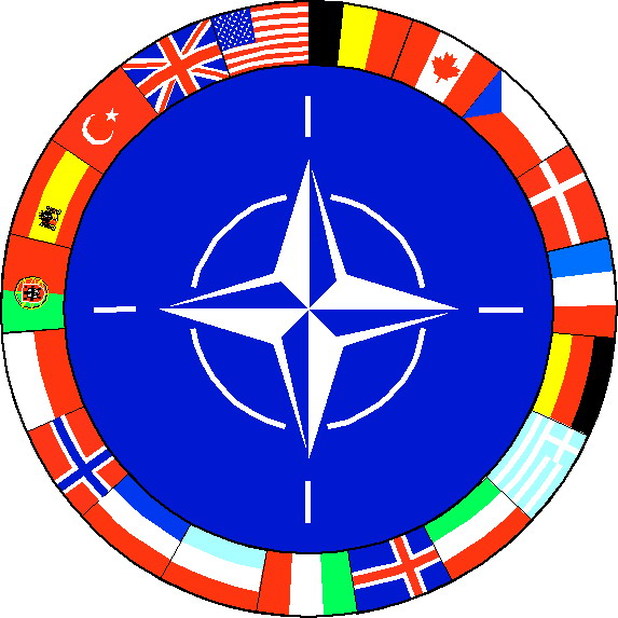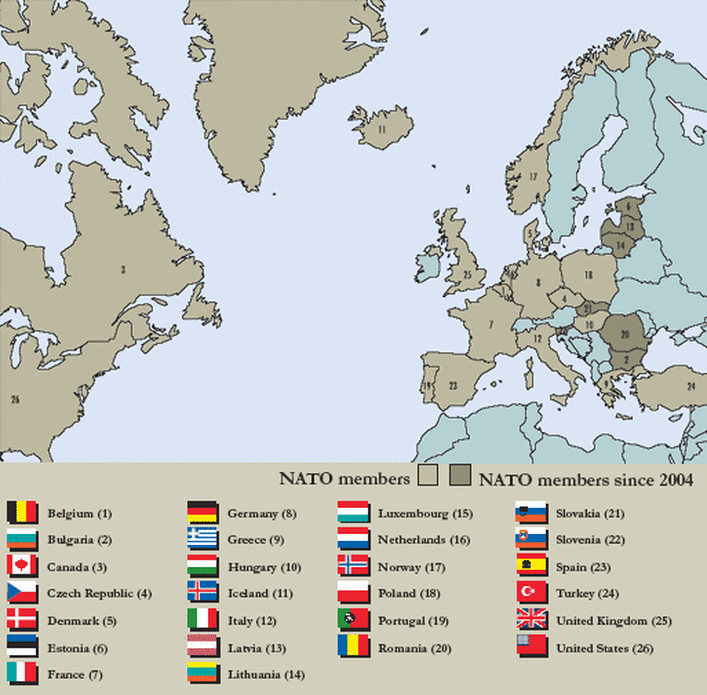Members of NATO

- Belgium
- Canada
- Denmark
- France
- Iceland
- Italy
- Luxembourg
- Netherlands
- Norway
- Portugal
- United Kingdom
- United States
The North Atlantic Treaty Organization (NATO) is an international alliance that consists of 28 member states from North America and Europe. It was established at the signing of the North Atlantic Treaty on 4 April 1949. Article Five of the treaty states that if an armed attack occurs against one of the member states, it should be considered an attack against all members, and other members shall assist the attacked member, witharmed forces if necessary.
Of the 19 countries, two are located in North America (Canada and the United States) and 26 are European countries. All members have militias, although Iceland does not have a typical army (it does, however, have a military coast guard and a small unit of soldiers for NATO operations). Three of NATO's members are nuclear weapons states:France, the United Kingdom, and the United States.

